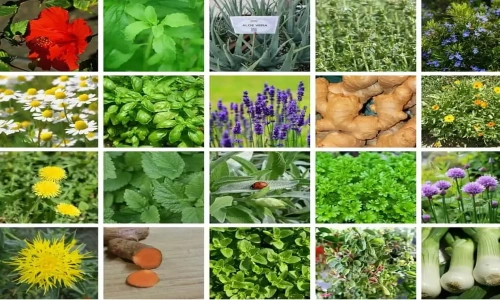Herbs are the building blocks for tasty, delicious meals. Without them, food would be bland and unexciting. But have you considered all of the amazing health benefits you can get from consuming them? For centuries, people have turned to medicinal herbs to cure their ailments. Even though we may have chemical alternatives today, many of the most common garden greens have tried-and-true medical benefits.
From plants that cure headaches to ones that can calm nerves, herbs are a ready-made medicine cabinet that you can grow in the smallest space – even if you don’t have an outdoor garden. Check out our list of the most powerful herbs that will help keep you and your family healthy.
1. Oregano (Origanum vulgare)
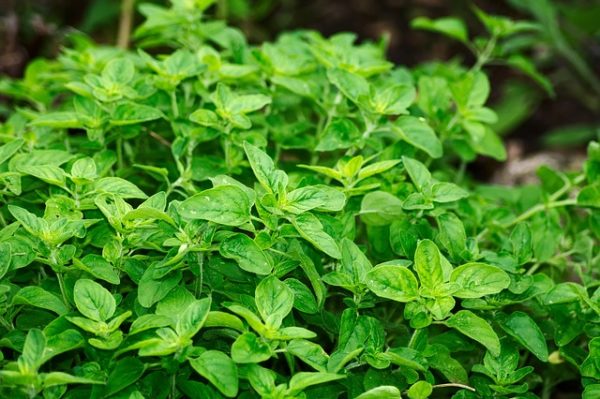
Culinary Use: Part of the mint family, this medicinal herb is available in multiple varieties. The tasty plant is used frequently in Italian and Greek dishes. It’s the classic addition to pasta or pizza sauce.
Medicinal Use: Oregano has antiseptic properties, and you can also use it to treat a number of stomach issues. Additionally, it’s an anti-inflammatory.
Little known fact: The name is derived from the Greek terms for mountain and joy, an apt description if we’ve ever heard one.
2. Chamomile (Matricaria chamomilla)
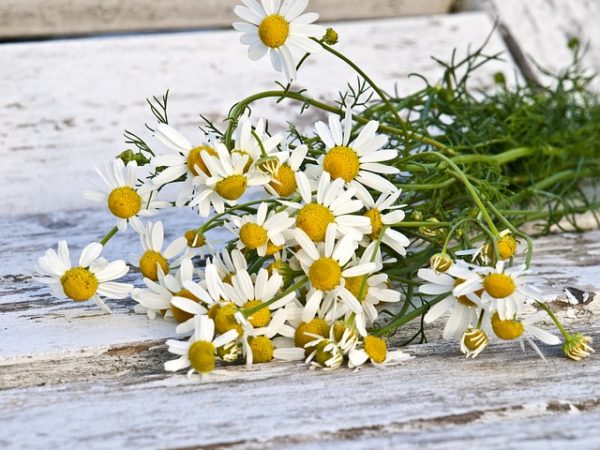
Culinary Use: This cheerful little herb is used most commonly for brewing herbal tea, but it also makes a sweet, floral addition to desserts and salads.
Medicinal Use: Like oregano, chamomile has anti-inflammatory properties. You can also take it in pill form or use it directly on the skin to treat a variety of ailments from eczema to stomach issues.
Little known fact: Using chamomile topically may induce skin reactions in some. We recommend doing a skin test before applying it to your skin.
3. Peppermint (Mentha × piperita)
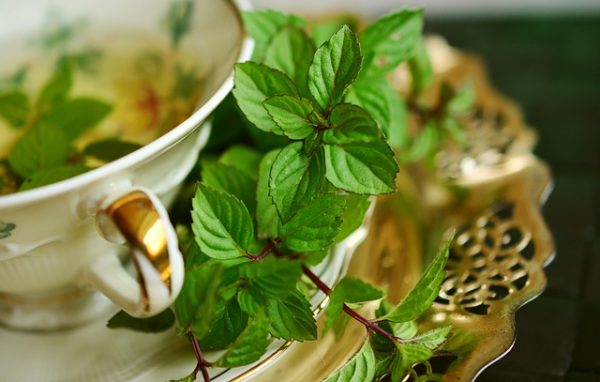
Culinary Use: Delicious in sweet and savory dishes, peppermint is a versatile medicinal herb in the mint family. It’s also easy to grow, and it packs a punch of flavor. Peppermint makes a delightful tea.
Medicinal Use: If you have a sore tummy, peppermint is your plant. I personally find peppermint essential oil to be helpful when I have a cold or a mild headache. There’s evidence that peppermint is just as effective as over the counter pain relief medication for treating certain types of headache pain.
Little known fact: Peppermint is a hybrid cross between watermint and spearmint.
- Medicinal Garden
- With your seeds kit, you’ll also receive a FREE Medicinal Guide that shows you how to turn these 10 plants into tinctures, ointments, salves, poultices, decoctions, infusions, essential oils —all in minute detail so you can follow our guide even if you’ve never made an herbal medicine in your life.
4. Bay Laurel (Laurus nobilis)
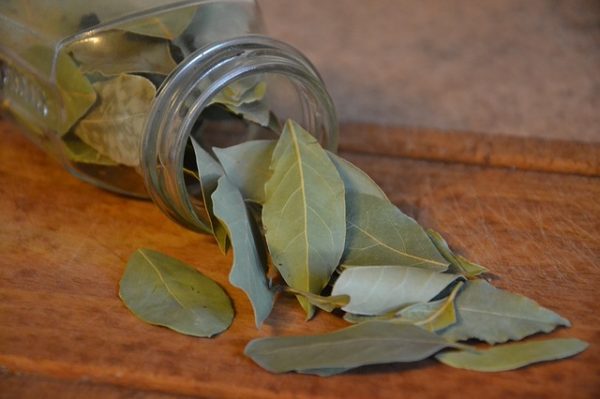
Culinary Use: A favorite herb for French cooking, bay leaf lends plenty of flavor to a variety of dishes. You may see this in dry leaf form, but it’s also marvelous fresh.
Medicinal Use: The bay laurel a useful and versatile medicinal herb for treating many ailments from joint pain to skin issues thanks to its anti-bacterial and anti-fungal properties.
Little known fact: Bay has sedative properties, and if you’re heading into surgery, steer clear of it.
5. Rosemary (Rosmarinus officinalis)
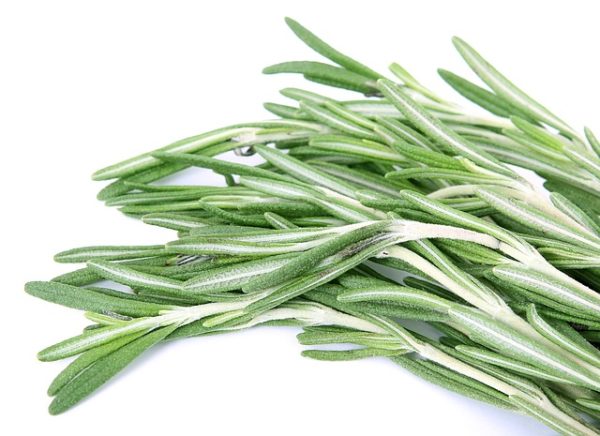
Culinary Use: Rosemary’s strong aroma and flavor make it a great accompaniment to meat dishes. It pairs well with pork, chicken, lamb or steak.
Medicinal Use: As an anti-microbial and anti-inflammatory medicinal herb it’s particularly useful when you apply it directly to the skin.
Little known fact: Some research suggests that rosemary may prevent neurological conditions affecting memory such as Alzheimer’s. Too bad I won’t reap the benefits, because it’s my least favorite herb!
6. Garlic (Allium sativum)
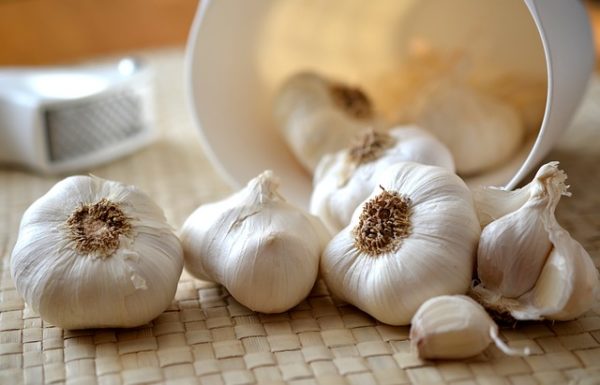
Culinary Use: The queen of savory dishes, garlic is a staple in most kitchens. There’s nothing quite like the sharp, spicy taste of it.
Medicinal Use: Consume garlic if you want to reap a slew of health benefits, including a boost to the immune system and help to regulate your bodily functions such as blood pressure.
Little known fact: Fermented garlic is what’s known as black garlic, and I believe it’s even more delicious than regular garlic!
7. Dill (Anethum graveolens)
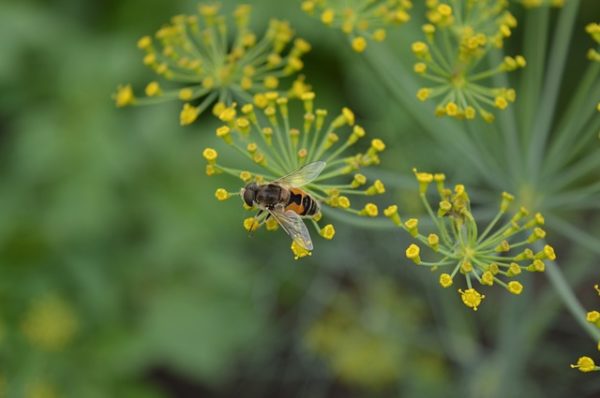
Culinary Use: This herb pairs exceptionally well with fish, and who hasn’t had a dill pickle.
Medicinal Use: You can use dill as a treatment for digestive issues.
Little known fact: Did you know that dill is actually related to the carrot family? It’s not surprising if you compare the feathery tops of both plants. They sure do look alike!
8. Savory (Satureja)
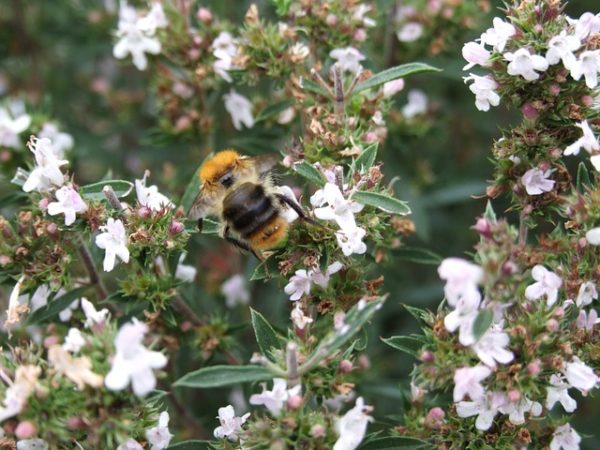
Culinary Use: A lesser known herb, you can use both savory’s winter and summer varieties in cooking. Its flavor is similar to thyme, though the taste differs depending on the variety.
Medicinal Use: You can use it to soothe the throat and treat other ailments concerning the digestive tract.
Little known fact: The winter variety of this herb was once thought to reduce libido.
9. Bergamot (Monarda fistulosa)
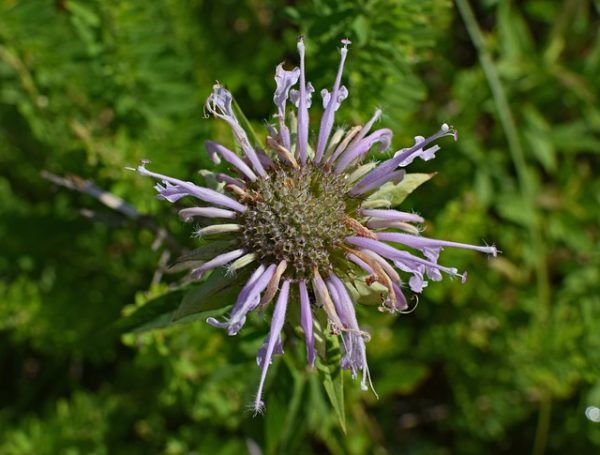
Culinary Use: You’ll often find this unusual little flower as an ingredient in tea. Bergamot has a faint citrus aroma, and you can eat the leaves and flowers of this perennial.
Medicinal Use: You can use bergamot as a treatment for headaches and upset stomach. Native Americans utilized it as a cure for the common cold.
Little known fact: Bergamot, also known as bee-balm, attracts not just bees but hummingbirds, too.
10. Thyme (Thymus vulgaris)
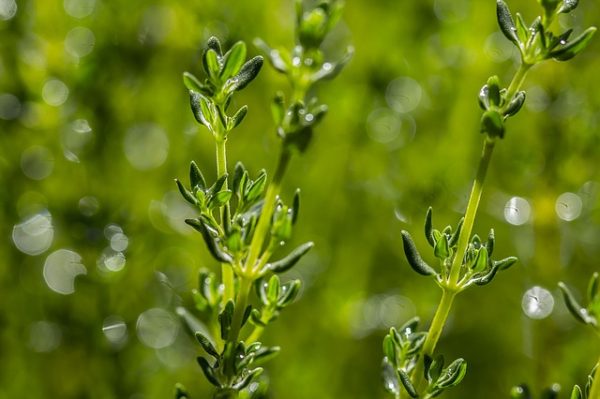
Culinary Use: Milder than other medicinal herbs, thyme still provides a lovely flavor to all sorts of dishes. Pairs easily with many foods and tastes superb fresh or dried.
Medicinal Use: This plant can ward off insects and has anti-bacterial properties.
Little known fact: Thyme was once used in place of modern embalming fluid.
11. Ginger (Zingiber officinale)
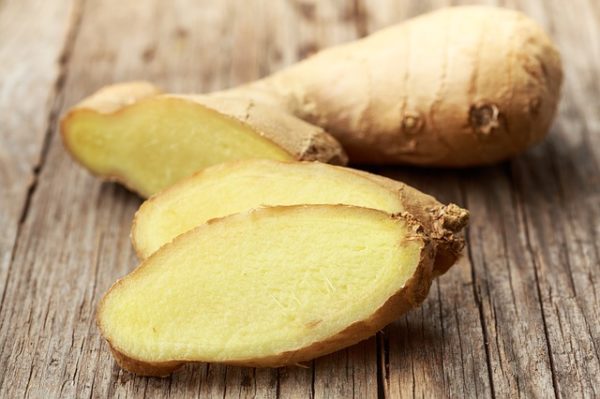
Culinary Use: Technically this is a spice rather than an herb, but it’s widely used in cooking worldwide. Ginger fresh or dried is delicious in a variety of cuisines from Indian to Thai.
Medicinal Use: Commonly used in Chinese herbal remedies, ginger can treat digestive ailments. It’s a miracle worker for nausea.
Little known fact: Ginger may interact with blood thinner medication.
12. Basil (Ocimum basilicum)
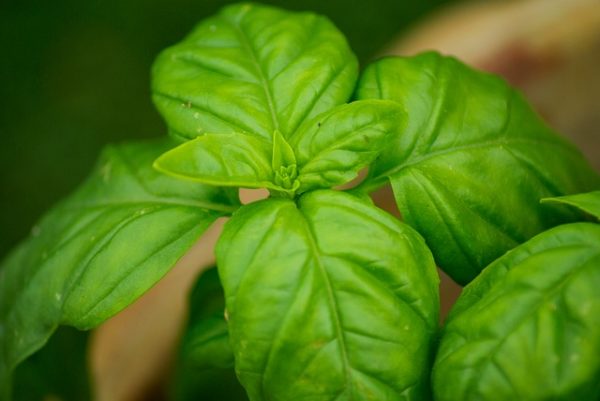
Culinary Use: Probably one of the most popular herbs out there. I often have friends asking me for advice on how to keep their basil alive. The Mediterranean herb is delicious made into pesto or as a fresh topping on pizza. There are many varieties of basil each with a unique flavor.
Medicinal Use: Though the evidence is limited, there’s some belief that basil is a helpful option for treating stomach issues.
Little known fact: Basil is nicknamed Saint Joseph’s Wort, not to be confused with Saint John’s Wort.
13. Lavender (Lavandula)
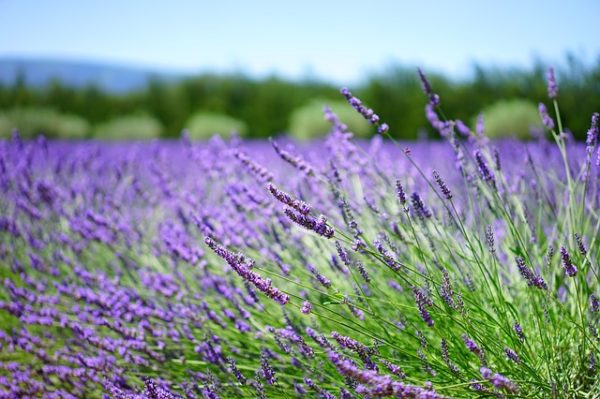
Culinary Use: Lavender isn’t just a pretty face. You might think it’s only useful for bouquets and adding fragrance to soaps and other bath products. Au contraire. You can also use lavender, of which there are more than 40 species, in the kitchen. Lavender adds a delicious flavor to honey, and you can also use it in flavoring desserts. Lavender tea is also popular.
Medicinal Use: This medicinal herb can be used as an antiseptic, and it’s also helpful in treating sleep problems.
Little known fact: In French, lavender is called lavendre, which is the verb for ‘to wash.’
14. Parsley (Petroselinum crispum)
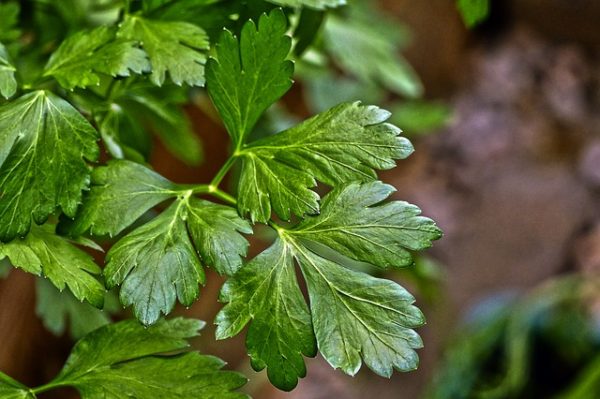
Culinary Use: Pretty much everyone has used curly or flat-leafed varieties of this herb as a garnish. But don’t just use parsley to top dishes. It has an intense, fresh taste that’s wonderful in spring soups.
Medicinal Use: There’s some evidence that this herb a diuretic. In the past, parsley was also used to treat conditions from skin lesions to cancer.
Little known fact: In large quantities, parsley is unsafe for pregnant women.
15. Sage (Salvia officinalis)
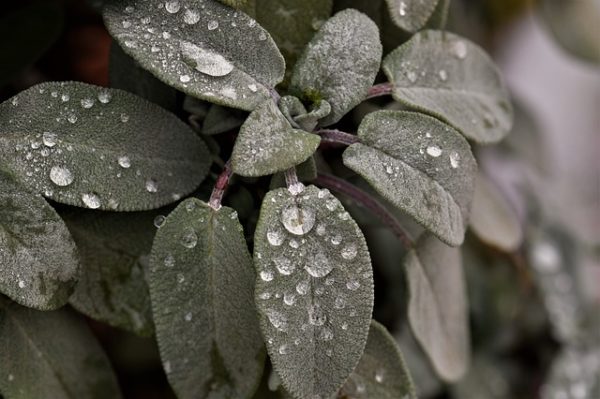
Culinary Use: Often used to flavor poultry dishes and as a garnish, this is a hardy perennial.
Medicinal Use: People use this medicinal herb as a useful remedy for a scratchy, tender throat.
Little known fact: Sage is also known as Salvia, but not all varieties are grown for culinary use. Dalmatian sage, also known as garden sage is the kind most often grown for kitchen harvests.
16. Fenugreek (Trigonella foenum-graecum)
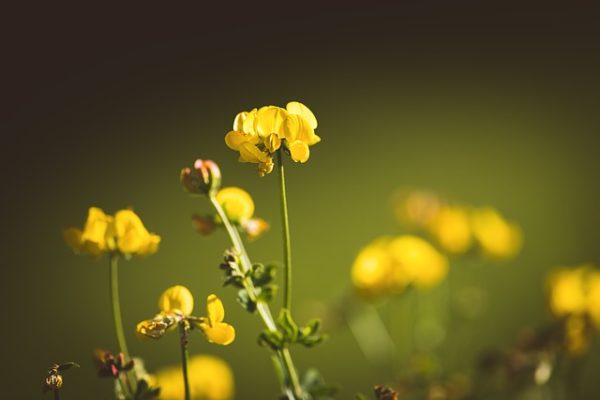
Culinary Use: I first heard about this plant when watching HBO’s drama ‘Six Feet Under.’ Chefs in the culinary world love to use it for its slightly bitter flavor.
Medicinal Use: Fenugreek shows promise in regulating blood sugar.
Little known fact: You can find this medicinal herb in imitation vanilla.
17. Borage (Borago officinalis)

Culinary Use: It’s pretty flowers don’t just attract bees, they’re edible, too. The plant also makes a tasty tea.
Medicinal Use: There’s evidence that this medicinal herb can regulate cortisol levels in the body. When you apply it topically, it may help treat skin conditions.
Little known fact: Plant borage next to your brassicas to ward off the dreaded cabbage worm (my arch nemesis).
18. Fennel (Foeniculum vulgare)
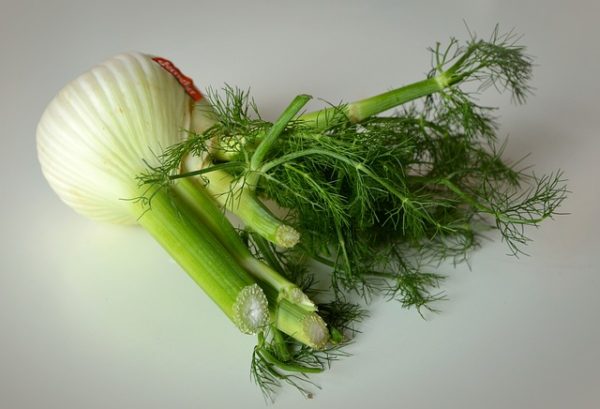
Culinary Use: Fennel tastes wonderful paired with fish. If you aren’t crazy about fennel’s anise-like flavor, you can mellow it out by cooking. For those of us who like the licorice punch, it makes a delicious addition to salads.
Medicinal Use: This highly nutritious plant provides myriad health benefits including regulation of blood pressure and improving digestion.
Little known fact: Fennel is an ingredient in some toothpaste.
19. Tarragon (Artemisia dracunculus)
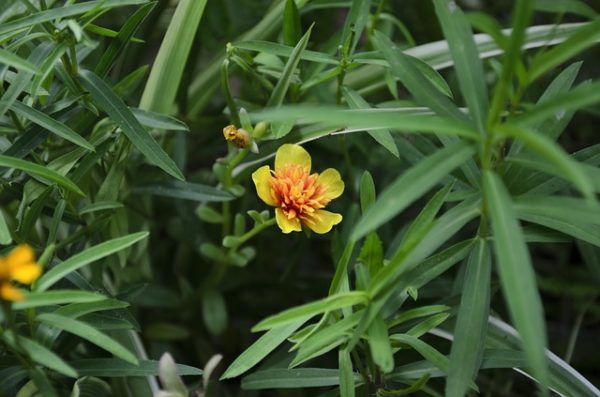
Culinary Use: The French variety is what you’ll find in the dried herb aisle at the grocery store and the kind you should grow in your kitchen garden. Other types are fine to eat but aren’t particularly tasty. It’s a versatile medicinal herb used in many kinds of dishes including sauces and regional beverages.
Medicinal Use: Tarragon can potentially stimulate appetite and treat problems with digestion, but there’s little evidence to support these claims.
Little known fact: This medicinal herb is a cousin of the majestic sunflower.
20. Echinacea (Echinacea purpurea)
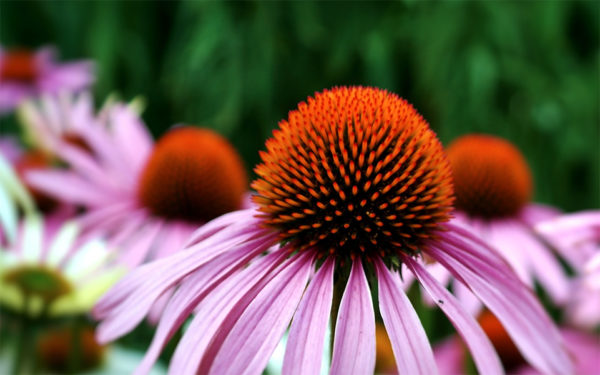
Culinary Use: None. It tastes sweet at first, but then turns bitter and make your tongue tingle.
Medicinal Use: You can use echinacea to reduce internal infections. An injection can help treat hemorrhoids, and you can also use it heal to clean sores and skin inflammation. Contrary to what you’ve probably heard, there isn’t much evidence to support taking echinacea to help with colds.
Little known fact: The name comes from the Greek term for a hedgehog, a reference to the prickly-looking flowers.
21. Feverfew (Tanacetum parthenium)
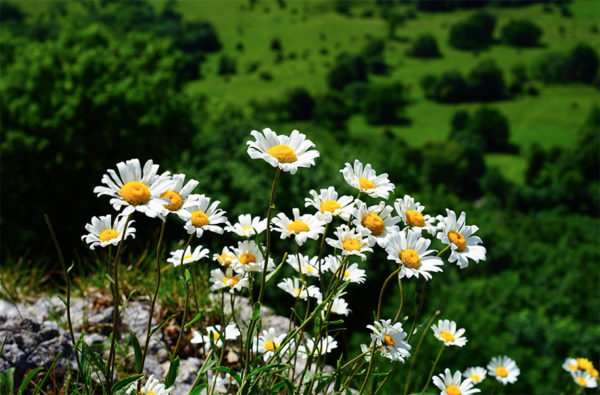
Culinary Use: None
Medicinal Use: Given the name, it shouldn’t surprise you that this plant is good for treating fevers. It can also help with migraines, inflammation, menstrual cramps and to relieve gas and bloating.
Little known fact: The oil contains a compound that can paralyze fleas.
22. Lemon Balm (Melissa officinalis)
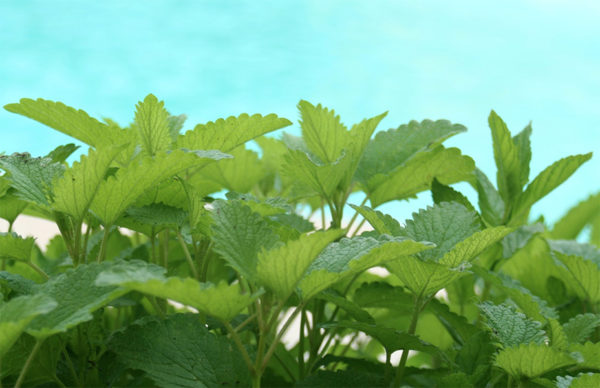
Culinary Use: Lemon balm can replace lemon peel in recipes or anywhere you want a hint of lemon flavor. It makes a lovely tea. You can add the leaves to a salad for a citrusy punch.
Medicinal Use: Lemon calm contains a calming agent, which can help ease anxiety and put you to sleep. There’s also some evidence that it can help regulate benign heart palpitations. An extract on the skin can help with cold sores.
Little known fact: The Latin name Melissa officinalis comes from the Greek nymph named Melissa who spread the word about the wonders of honey. Since honeybees love this plant, the name is fitting.
23. St. John’s Wort (Hypericum perforatum)
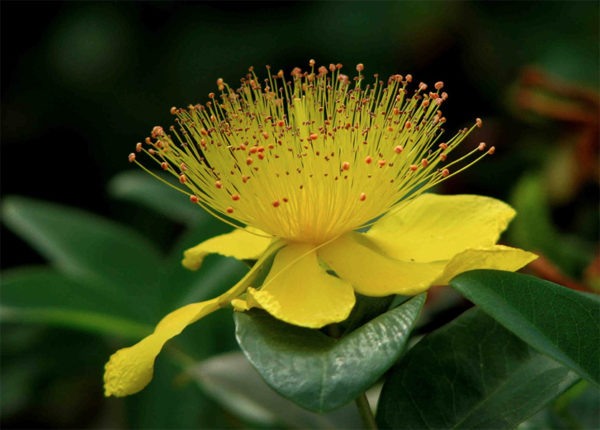
Culinary Use: None, though people used to drink it to ward off evil spirits.
Medicinal Use: St. John’s Wort has a reputation for helping with depressive disorders including bipolar disorder because it impacts serotonin levels. Be careful, though, because it can interact negatively with other meds and the science isn’t conclusive. It can also help with anemia, congestion and urinary issues.
Little known fact: The tea made from this plant smelled so foul that people assumed evil spirits wouldn’t bother someone who drank it.
24. Nettles ( Urtica dioica)
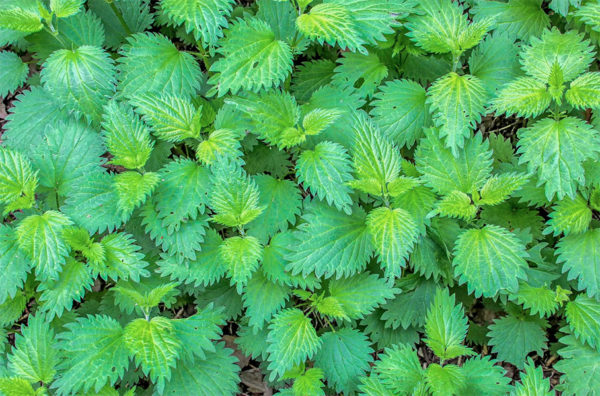
Culinary Use: Nettles are delicious in soups, salads, and pasta. It’s also marvelous on pizza or on a warm grain salad.
Medicinal Use: Nettles are a valuable addition to a medicinal herb garden. They help with anemia, gout, skin disorders, urinary issues, arthritis, joint pain, and kidney stones.
Little known fact: Scientists believe that nettles developed those awful stinging hairs to ward off grazing animals. It works on cows, but goats still nibble on the plants.
25. Burdock (Arctium)
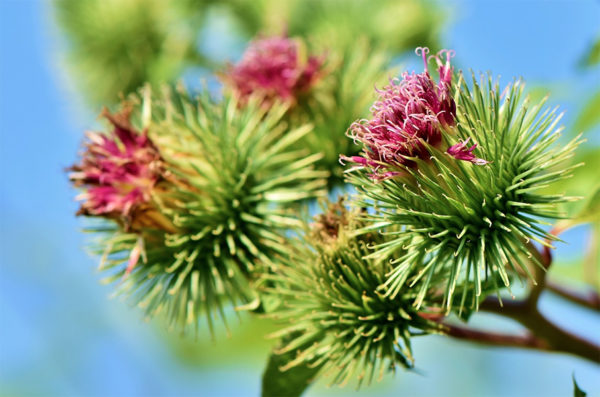
Culinary Use: While the leaves and flowers are useful in medicine, the culinary power of burdock lies in its roots. People in Japan know this plant as gobo. You’ll frequently see it along with sushi, but you can also eat it dried or pickled, too. You can add it to soups and stews as well.
Medicinal Use: Burdock does wonders for the skin. It helps treat eczema and psoriasis. Internally, it helps with a sore throat, colds, and tonsilitis. It’s also a diuretic.
Little known fact: Burdock was the inspiration for Velcro. The inventor was hiking with his dog and noticed how the burdock seeds locked onto his dog’s fur, and the rest is history.
26. Wormwood (Artemisia absinthium)
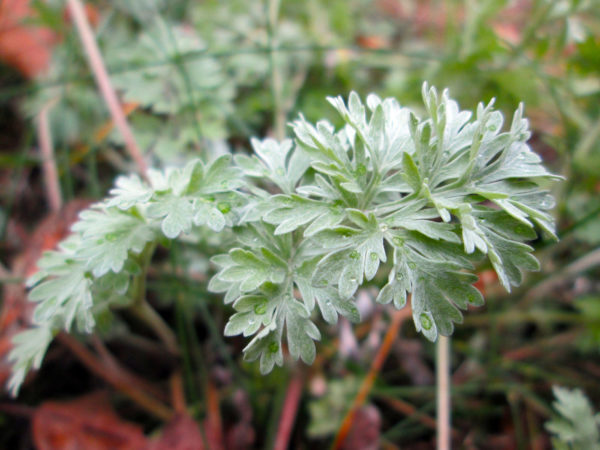
Culinary Use: Wormwood is most famous as an ingredient in absinthe, but you can find it in other liquors, bitters, wines, and flavorings.
Medicinal Use: You can use wormwood to help with stomach issues like nausea, loss of appetite and gallbladder disease. It can also help lower fevers and ease depression. You can apply it to the skin to heal wounds and insect bites.
Little known fact: Wormwood got its name from the goddess Artemis, who is the goddess of chastity and birth. In the past, people thought the herb could help promote chastity.
27. Motherwort (Leonurus cardiaca)
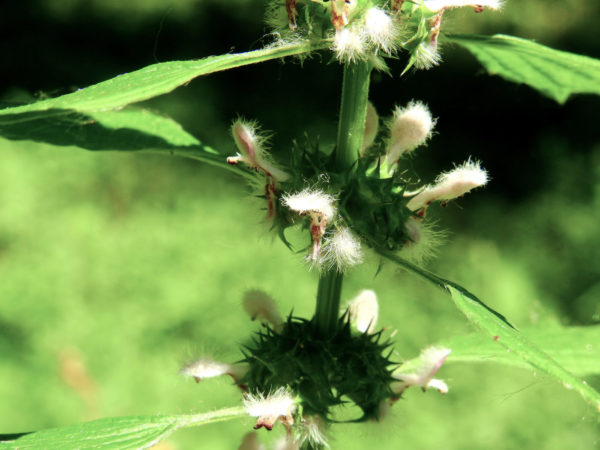
Culinary Use: Motherwort is a member of the mint family, but we don’t recommend using it in your cooking because it has a bitter taste.
Medicinal Use: You can use motherwort for cardiovascular issues like heart failure and irregular heartbeat. It also helps alleviate menstrual pain, can bring on menstruation, and eases symptoms of menopause. It’s an antioxidant.
Little known fact: Legend has that a town was built in a spot near a spring that bubbled up through motherwort plants. Allegedly, the people who lived in the city drank the spring water, and everyone lived over a century. That’s why we associate this medicinal herb with longevity today.
28. Catnip (Nepeta cataria)
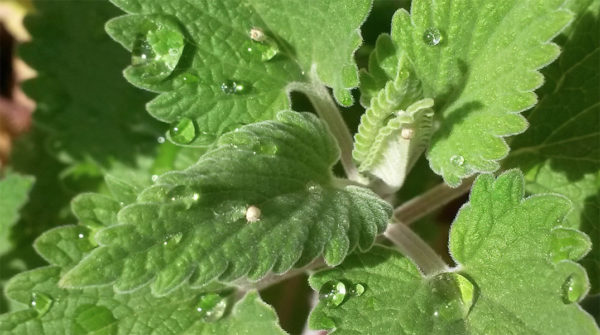
Culinary Use: Catnip is also part of the mint family. Beyond giving it to your cat, it is tasty in salads, soups, and sauces.
Medicinal Use: Catnip is good for relieving nerves and calming the stomach. You can also use it to ease painful menstrual cramps. There’s also evidence that it can help with headaches and fevers.
Little known fact: Not all cats are susceptible to the impacts of catnip, but for those who are, it has an intoxicating effect.
Caution
Remember, of course, that consuming medicinal herbs is not a substitute for visiting a physician. If you’re experiencing repeated, unpleasant symptoms visit a healthcare professional to get a proper diagnosis.
Those on medication should be aware that certain active ingredients may interact with drugs you are taking. Pregnant women should take caution if they decide to supplement with herbs in large quantities.
Do you have a favorite herb that finds its way to your dinner plate often? Were you aware of the health benefits of said herb? We’d love to hear all about your experience in the comments below.
Do you know about the gift of nature to save the life of people from various health problems and make them feel secure by curing significant issues? How to live healthy in this world without having chronic diseases or illness or any other health issues which may hurt you physically and mentally? Due to dense population, people are trying to demolish the forest, garden areas to create shelter, so they forced to destroy the nature’s gift such as natural ingredients, secret medicinal herbs and more which are grown in wild forest, mountains and other places. When you read this review entirely, sure you will get chance to know about secrets medicinal ingredients, herbs and more used by our ancestor to get back the lost health without losing your life. Claude Davis was highlighted all the stuff in the form of the e-book The Home Doctor filled with a list of natural ingredients and remedies that you can quickly grow in the backyard or at free space to include it in your routine diet or external usage to get well soon.
Books can be your best pre-collapse investment.
Carnivore’s Bible (is a wellknown meat processor providing custom meat processing services locally andacross the state of Montana and more. Whether your needs are for domestic meator wild game meat processing)
The Lost Book of Remedies PDF ( contains a series of medicinal andherbal recipes to make home made remedies from medicinal plants and herbs.Chromic diseases and maladies can be overcome by taking the remediesoutlined in this book. The writer claims that his grandfather was taughtherbalism and healing whilst in active service during world war twoand that he has treated many soldiers with his home made cures. )
Easy Cellar(Info about building and managing your root cellar, plus printable plans. The book on building and using root cellars – The Complete Root Cellar Book.)
The Lost Ways (Learn the long forgotten secrets that helped our forefathers survive famines,wars,economic crisis and anything else life threw at them)
LOST WAYS 2 ( Wordof the day: Prepare! And do it the old fashion way, like our fore-fathers did it and succeed longbefore us,because what lies ahead of us will require all the help we can get. Watch this video and learn the 3 skills that ensured our ancestors survival in hard times offamine and war.)

